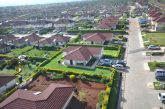
The Treasury has recently published the 2021 Budget Review and Outlook Paper. In activating the 2022/23 national budget cycle, the Budget Review and Outlook Paper reviews recent economic and fiscal developments offer an outlook on the medium-term future and prompt the national government’s 10 Medium Term Expenditure Framework sectors to prepare resource bids against the ceilings it sets.
Except that this time, and for the first time, ceilings were not published. Instead, the detailed text refers us to the 2021 Budget Policy Statement (BPS). Simply, the resource envelope, including revenue, and baseline expenditure ceilings are retained at the BPS level set in February. Did somebody whisper International Monetary Fund (IMF)?
Effectively this means that there are no fiscal “tweaks” to revenue or expenditure that reflect what’s happened or might have changed since then. In truth, if the past two years are any guide, the total of sector bids will exceed the Sh1.97 trillion ceiling by at least a trillion. Even impunity requires a plan.
Following public hearings, which are sector pleadings, the Treasury will unilaterally cut it all back to the original ceilings in the November BPS which ministries, departments and agencies (MDAs), now dissolved from their parent sectors, will use to prepare their 2022/23 budgets. It’s a circular route, infested with retreat allowances and “working late” honoraria that culminate in an early pre-election reading of the Budget Statement next March.
Budget Review and Outlook Paper
In the Budget Review and Outlook Paper itself, fiscal 2021/22 (current financial year) economic growth is projected at 6.2 percent (6.6 percent for calendar 2021), up from 3.6 percent in Covid-ravaged fiscal 2020/21. Because cumulative growth for the first three quarters of 2020 was negative 0.4 percent (negative two per cent excluding agriculture), this suggests a remarkable recovery to June from a lower base, not new prosperity.
Expectedly, agriculture and ICT did well in the first quarter to three, growing at 6.4 and 7.5 percent respectively. In challenging Covid-19 times, “outdoor” sectors also shone — mining and quarrying grew at an astonishing 12.6 percent and construction at 8.6 percent. “Wash Wash” (money laundering) building boom, anyone?
Despite this, the Budget Review and Outlook Paper acknowledges that 2020 was bad, without saying how bad overall while observing from leading indicators an initial recovery in 2021 led by agriculture, construction, ICT, real estate and financial services. For other services sectors, the outlook remains uncertain.
On the fiscus, tax collection performed brilliantly in 2020/21, but other revenues didn’t. It beggars belief that the mop-up of surplus cash from parastatals, which underperformed, is treated as key revenue.
Although our spending elephant in the room fell short mostly on the development front, we still hit a deficit of 8.5 percent of gross domestic product, which will fall to 7.5 percent this year and 5.6 percent in 2022/23, despite lower growth projections now than in February’s BPS. Business as usual, anyone?
What about counties, now busy with their County Budget Review and Outlook Papers? Well, from the national level, no change is planned in the equitable share; in 2022/23 it remains at this year’s Sh370 billion, before rising by a princely Sh5 billion in 2023/24.
Expenditure absorption rate
Looking back, the Treasury happily notes that, in 2020/21, counties received, on aggregate, 100 percent of their 15 percent equitable share, 92 percent of conditional allocations, 86 percent of external loans and grants and 100 percent of roads funds.
Effectively, 98.6 percent of total allocations are contained in the 2020 County Allocation of Revenue Act. Left quietly unsaid is the perennially slapdash timing of these allocations. As the Council of Governors will attest, financial predictability (budgeting) is quite different from financial certainty (flow of funds).
As Budget Review and Outlook Paper illustrates, the overall recurrent expenditure absorption rate nine months (or 75 percent) into 2020/21 was 64 percent, while that for development was 25 percent. In other words, counties have cash for salaries and some daily running costs but cannot get going on development. That there’s growing debate over “the other 85 percent” that national government retains, especially the development component, is unsurprising.
Beyond national mega-projects and teachers, Press reports offer an unusual added clue. Did you know that devolved Kenya at ground zero includes 12,876 administrators from the national government and only 1,834 elected leaders?
Think eight regional coordinators, 47 county commissioners, 289 and 831 deputy and assistant county commissioners, and 3,256 and 8,145 chiefs and assistant chiefs. Excluding nominations, think 47 governors and senators, 290 MPs and 1,450 MCAs in our counties, constituencies and wards. Let’s leave county-level ward administrators out of this picture.
Recall the Constitution’s transitional provisions? The national government was to “restructure…the provincial administration to accord with and respect the system of devolved government established under this Constitution”. Yeah, like seven administrators per elected official! Who’s developing whom?
Here’s what Budget Review and Outlook Paper is saying. We don’t have all the data, but we think we will grow despite IMF’s fiscal straitjacket. Our un-restructured spending bed is made, so we can’t do much for counties right now. That’s our next President’s basic context when (s)/he assumes office three months into fiscal 2022/23.
Courtesy; Business Daily





